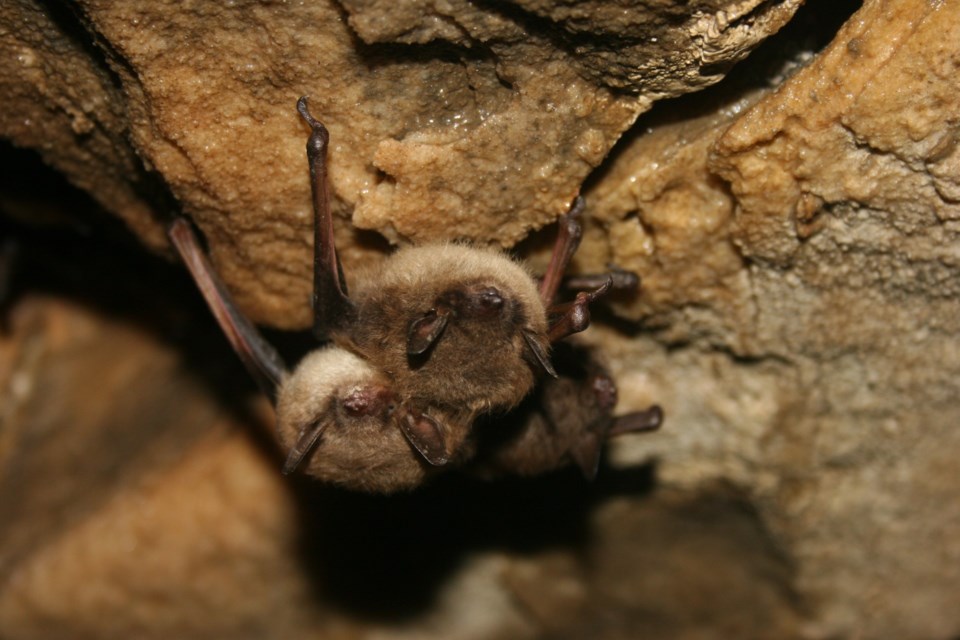The BC Community Bat Program is working with the province to detect and prevent the spread of white-nose syndrome, a fungal-based infection which has killed millions of bats in North America. No cases have been detected in BC, but the fungus which causes it was detected in Grand Forks last year.
Residents across the province are urged to report any bat activity observed in winter and any sick or dead bats found before May 31, as biologists are concerned that the syndrome's arrival could be imminent, explains a press release.
“Increasing the number of bat reports from the public is the best chance to understand how WNS might spread and affect local bat populations,” wrote Inge-Jean Hansen, Peace Region coordinator for the BC Community Bat Program, in the release.
“Seven of our 15 BC species could be severely affected by the disease,” added Hansen, including the Little Brown Myotis and the Northern Myotis, which are both listed as endangered in Canada due to the threat posed by the syndrome.
The disease was first detected in New York State in 2006, and has since been detected in western and central Washington and in south-central Alberta. The fungus can't harm humans or pets, but attacks bats during hibernation, growing their faces, giving the appearance of a white nose.
Bats then wake to clean the fungus from their skin, using up energy needed for hibernation, and eventually die from starvation. There's no proven cure yet for the fungal disease, but treatment options are being developed which may help mitigate the ongoing wildlife health crisis.
“Across North America, millions of bats have been killed, and seven of our 15 BC species could be severely affected by the disease,” says Hansen. The Little Brown Myotis and the Northern Myotis are both listed as Endangered in Canada due to WNS. Though there is not yet a proven cure for WNS, several promising treatment options are being developed, and it may be possible to mitigate the effects of this wildlife health crisis.
“The bats of BC are key predators of many night-flying insects. They are essential parts of BC’s ecosystems and provide a huge economic benefit by helping control agricultural, forest, and urban pests,” Hansen noted.
If you find a dead bat or have sightings of winter bat activity, please report it to the BC Community Bat Program online at , email at [email protected] or by calling 1-855-922-2287 ext.18
However, they caution that all live bats should be left alone, but you can take a photo and report it to the community bat program. If you have no choice to move a bat, advice is , though residents should never touch a bat with bare hands.
If you or your pet has been in contact with a bat, you may need further information regarding the risk of rabies, which is also available through the BC Community Bat Program.



